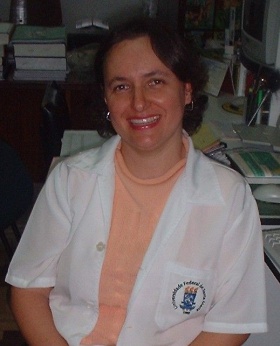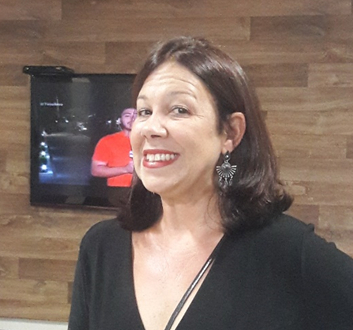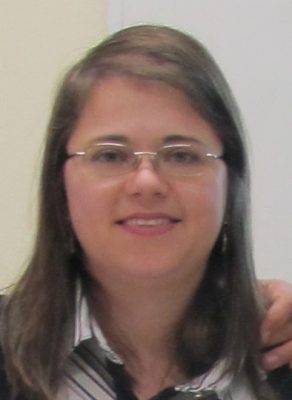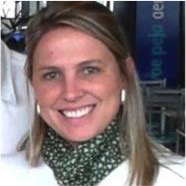Joerg Feldmann (University of Aberdeen)
Professor of Environmental Analytical Chemistry, University of Aberdeen, Scotland, UK.

Joerg Feldmann’s research interest are in the discovery and understanding of biotransformations of toxic elements such as arsenic, mercury and selenium in the environment. He has developed novel analytical methodologies using elemental and molecular mass spectrometry to determine the molecular forms and natural nanoparticles of those elements and how they behave in the marine and territorial ecosystems. His work contributed to new regulations on the maximum limits of the carcinogenic inorganic arsenic in food and feed such as rice, vegetables and seaweed.
Lecture: Novel strategies to understand processes in biology and environmental science
Abstract: If an environmental or biological process is going to be characterised key compounds (biomarker) need to be identified and fully quantified. Here in this talk a few case studies will illustrate that simply use the established biomarker such as the concentration of mercury or arsenic cannot give an adequate description of the process nor would it give an adequate assessment of their potential toxicity.
Eliana Badiale Furlong (FURG)
Professor at the Federal University of Rio Grande, RS, Brazil.

Eliana Badiale Furlong, graduated in pharmaceutical biochemistry, doctor in Food Science and tenured professor in the Federal Univesity of Rio Grande, where she teaches in the undergraduate Food Engineering course and in the graduate in Engineering and Food Science and in the Technological and Environmental Chemistry. Her researches themes are in the chemical, physical-chemical and biochemistry of food and food feedstock. Recent publications have been focused mycotoxins, specially in strategies to mitigate risk of contamination in the food production chain and in making nutrients and functional compounds available through biological processes.
Lecture: Natural resources as strategies to mitigate fungal contamination and its consequence.
Pio Colepicolo Neto (USP)
Professor at the University of São Paulo, SP, Brazil.

Lecture: Metabolites from algae with economical impact .
Abstract: In order to survive in a highly competitive environment, freshwater or marine algae have to develop defense strategies that result in a tremendous diversity of compounds from different metabolic pathways. Recent trends in drug research from natural sources have been proven algae as promising organisms to furnish novel biochemically active compounds. The main substances biosynthesized by algae which economical impact in food science, pharmaceutical industry and public health will be described. Emphasis is given to fatty acids, steroids, carotenoids, polysaccharides, lectins, mycosporine-like amino acids, halogenated compounds and polyketides. Additionally natural products extracted from algae collected in Antarctic will be discussed.
Maria Rosa Chitolina Schetinger (UFSM)
Professor at the Federal University of Santa Maria, RS, Brazil.

Lecture: Biocompounds and diabetes: focus on the purinergic system and oxidative stress.
Abstract: Diabetes Mellitus (DM) is a condition characterized by hyperglycemia resulting from an inneficiency of the organism to use blood glucose adequately. Chronic hyperglycemia increases the frequency of non-enzymatic glucose adduction with proteins, lipids and DNA. These will form advanced glycation end products (AGEs), which alter the structure and function of several proteins. The enzymes that degrade adenine nucleotides, such as NTPDases and 5′-nucleotidase (ectonucleotidases), regulate ATP, ADP and adenosine levels, which are important signaling molecules. The main objective of this lecture is to present the results obtained by our research group on diabetes, oxidative stress and biocompounds in the past years. Our results demonstrated that, in general, hyperglycemia increases ectonucleotidases activities (platelets and synaptosomes of cerebral cortex from rats induced to diabetes by streptozotocin or alloxan) and oxidative stress (Lunkes et al., 2008; Schmatz et al., 2009; Stefanello et al., 2016; Maciel et al., 2016). Furthermore, our studies have shown that the treatment with biocompounds can prevent cellular damage caused by DM. We demonstrated beneficial effects from different biocompounds on diabetes, as follow: resveratrol (Schmatz et al., 2009); chlorogenic acid which also effectively reduced platelet aggregation (Stefanello et al., 2016); quercetin (Maciel et al., 2016); caffeic acid and caffeine (Stefanello et al., 2016). For example, resveratrol and rosmarinic acid reversed the decreasing of Catalase and Superoxide dismutase activities in the kidney and liver of diabetic rats (Schmatz et al., 2009; Musthaq et al., 2015). In conclusion, biocompounds, as cited above, can provide vascular and neuroprotection, which may be useful in the prevention and progression of damage caused by diabetes mellitus.
Juliano Ferreira (UFSC)
Professor at the Federal University of Santa Catarina, Florianópolis, Brazil.
Lecture: Animal venoms as a source of novel analgesic drugs
Abstract: Animal venoms correspond to a complex mixture of compounds, which have evolved for centuries, improving the animals’ defensive actions. Venomous animals are frequently stereotyped as inflictors of pain and distress and have historically been vilified by mankind. Yet, ironically, the very venoms that cause pain when directly injected by the host animal may actually turn out to contain the next generation of analgesics when injected by the clinician. In this talk, I will show why the study of animal venoms can be helpful not only to understand the pain produced by some venomous animals, but also to discover bioactive substances and develop novel drugs, specially analgesics.
Nelilma Correia Romeiro (UFRJ)
Professor at the Federal University of Rio de Janeiro, Macaé, RJ.

Lecture: Molecular modeling in the genomics era: opportunities and challenges.
Abstract: Advances in genomics have broadened the access to protein structures as therapeutic targets and interactions with other proteins or ligands. Dealing with such data opens opportunities to molecular modelling and rational drug design but also requires different tools in order to deepen the comprehension on molecular recognition mechanisms and challenges the predictive ability of such strategies. Chemogenomics applied to drug repurposing and target fishing will be given as examples of the application of modelling tools and usage of phenotypic data in drug discovery.
Jorge Mario Cárdenas Paredes (Central University)
Professor of Molecular Biology at Central University, Bogota, Colombia.

Biologist and Master Science in Biological Sciences from Andes University (Bogota, Colombia) and PhD in Forensic Sciences and Pathology from the Universidade de Santiago de Compostela, (Galicia Spain). Currently Lecturer in Molecular Biology, and invited professor of the law school at Central University (Bogota, Colombia). Had worked at Forensic analyst at the National Institute of Legal Medicine and Forensic Science (INMLyFC) (Colombia). Active researcher of the Forensic Genetics Research Group (INMLyCF) focused in developing new strategies in DNA methods and Bayesian Probability Statistics for human remains identification. Associate Researcher in Genetics at PECT (Study program of Political Transitions) at the Andes University.
Lecture: Forensic Genetics: Molecular Methods for Human Identification, Phenotyping and Familial Searching.
Abstract: Forensic Genetics is an applied field of human population genetics, a young research area that accounts for around 30 years old of research and active casework in the identification laboratories. The main objective of forensic genetics is to detect genomic variation between persons and populations, using polymorphic DNA markers whether from the nuclear or the mitochondrial genomes. Is frequent that these variants are common in a particular populatios but not in another, making possible to differentiate populations. Up to date, DNA testing do not only help to solve paternity testing problems, but also can gives clues to the authorities or law enforcement, about the ancestry, the physical characteristics like the color of the eyes, hair and skin of a sample. Moreover, a novel application of these molecular tools, is now currently been use by many nations that have encountered civil or dictatorship issues involving missing persons. The National DNA databases are now used to solve the identification of many unknown human remains in burial pits and have let the authorities identify and deliver to the family victims. Even tough, the DNA testing tools has gained a wrong visibility in the media, thanks to the TV series like CSI, where technicians solve crimes using DNA in less than an episode. The present lecture will explain the current methods and practices in the forensic DNA laboratory and research groups, as well demystify the wrong image of the field, digging on the robust tools for solving identification issues and nowadays trends.
Iraci Lucena da Silva Torres (UFRGS)
Professor at the Federal University of Rio Grande do Sul, Porto Alegre, Brazil.

Lecture: Long-lasting effect of transcranial direct current stimulation (tDCS) in the reversal of hyperalgesia and cytokine alterations induced by the neuropathic pain model.
Abstract: Background: neuropathic pain (NP) is caused by an insult or dysfunction in the peripheral or central nervous system (CNS), the main symptoms being mechanical allodynia and hyperalgesia. NP often shows insufficient response to classic analgesics and its management remains a challenge. Associated to great development of pharmacological therapies to assist in pain relief, studies have been undertaken to identify methods of central stimulation that can contribute in pain management. In this way, transcranial direct current stimulation (tDCS) is a non-invasive method of cerebral stimulation with low cost and represents a promising resource for pain management. Objective: to evaluate the effect of exposure to repeated transcranial direct current stimulation (tDCS) in the anti-nociceptive and anti-inflammatory response of rats submitted to neuropathic pain models developing a safer and more effective treatment for chronic pain. Methods: the animals were exposed to chronic constriction injury of infraorbital nerve (CCI- ION) surgery or to chronic constriction injury of sciatic nerve (CCI-SN) to induce neuropathic pain. The bimodal tDCS (0.5mA) was applied for 20min/day/8days. For the CCI-ION model, facial allodynia was assessed via filament von Frey test at baseline, 3, 7, 10 and 14 after surgery and also immediately and 24 hours after the end of treatment. For both experiments, the rats were killed by decapitation 48 hours or 7 days after treatment completion. In the CCI-SN model, the nociceptive response was assessed by the hot plate and von Frey tests and evaluated at baseline, 7 days, and 14 days after surgery, and also immediately, 24 hours, and 7 days following tDCS treatment. Were performed biochemical analysis for both models: in the CCI-ION model we analyzed the brainstem NGF, TNF-α, interleukin 10 levels, and serum LDH levels and in the CCI-SN the levels of IL-1β, IL-10 and TNF-α in the cortex, spinal cord, and brainstem by ELISA at 48 hours and 7 days post-tDCS. Results: the chronic constriction injury models provoked nociceptive behaviors until at least 30 days post-surgery; however, bicephalic tDCS relieved the nociceptive behavior for up to 7 days after treatment completion. In the CCI-ION model, was observed an interaction between the variables pain model and treatment in brainstem levels of NGF, TNF-α and IL-10. The CCI-SN model induced an increase in the levels of IL- 1 β and IL-10 in the CNS and those increases were totally reversed by bicephalic tDCS only in the spinal cord. Furthermore, the bicephalic tDCS plus NP modality increased TNF-α levels in the cerebral cortex and spinal cord only at 7 days after the end of tDCS sessions. Conclusions: in summary, our findings demonstrated that bicephalic tDCS is effective to promote antinociceptive behavior in neuropathic pain, which can be reflected by a spinal neuroimmunomodulation linked to pro- and anti-inflammatory cytokine levels observed in the long-term. In addition, we noted an important role of the central immune system in the neuropathic process, which can be implicated in maladaptive neuroplastic changes. Considering those alterations, to achieve a lasting benefit with a nonpharmacological and noninvasive treatment, this intervention should be able to modulate the entire signaling pathway.
Braulio Jimenez (University of Puerto Rico)
Professor at the University of Puerto Rico, Mayaguez, Puerto Rico.
Lecture: Understanding Air Pollution, lung inflammation and the Major Histocompatibility Complex.
Abstract: During the last decades, cardiovascular and respiratory illnesses related to air pollution have increased dramatically in the US and Puerto Rico. Substantial evidence has been accumulating indicating an elevated association between air pollution and adverse health conditions such as respiratory illnesses (respiratory track inflammation, acute bronchitis, COPD and asthma), lung cancer, and cardiovascular disease mortality. The respiratory system can respond to air pollutants resulting in an acute sudden reaction, or in a chronic or long persistent reaction leading to adverse health effects. More than two million premature deaths are estimated to occur globally each year as a direct consequence of air pollution through damage to the lungs and the respiratory system. More than half of these disease deaths are borne by the population of developing countries. Growing evidence shows an additional function of regulating immune responses through the production of cytokines and chemokine. We have reported the induction of pro-inflammatory mediators upon air borne particulate matter exposure (PM) in human lung cells. A remarkable immune fact associated with the mammalian inflammation process is the discovery of a concomitant tissue increase in the major histocompatibility complex class II (MHCII) expression. Many non-APC have been reported to express MHCII molecules, the production of humoral factors, bronchial epithelial cells and hepatocytes posses characteristics similar to antigen-presenting cells because they have been reported to express not only major histocompatibility complex (MHC) class I and class II molecules, but also co-stimulatory molecules. Recent experiments in our laboratory showed the expression of MHC class II in bronchialepithelial cells, which were up-regulated by exposure to PM 2.5 extracts. However, the release of INFγ, a known potent inducer of CIITA (master regulator of MHCII) resulted to be negligible. Nevertheless, CIITA, retained its expression. How can this be explained? We hypothesize that bronchial epithelium exposure to PM 2.5 results in CIITA expression by other mechanisms and biochemical pathways, which will be presented and discussed.
Sandra Elisa Haas (UNIPAMPA)
Professor at the Federal University of Pampa, Uruguaiana, Brazil.

Lecture: Design of polymeric nanoparticles for drug delivery applications
Abstract: Nanotechnology strategies have been applied to diagnostic, medical devices and therapeutics. Drug Delivery Systems based on nanocapsules are able to improve the biological performance of nanoencapsulated drugs due to advantages such as to sustained and control release of drugs, to target the drug to the biophase, to decrease systemic side effects, to increase the efficacy and to improve pharmacokinetic parameters. Polymeric nanocapsules have been used as delivery systems for drugs, proteins, nucleic acids, natural compounds and new chemical entities. The qualitative-quantitative composition depends on the desired effect and route of administration. Then, this work will demonstrate as the surface charge, characteristics of the oily core and supramolecular organization of the nanocapsules affect the pharmacokinetic, pharmacological and toxicological characteristics of drugs.
Flavio Fernando Demarco (UFPel)
Professor at the Federal University of Pelotas, Pelotas, Brazil.
Fabiana Kömmling Seixas (UFPel)
Professor at the Federal University of Pelotas, Pelotas, Brazil.

Lecture: Medical Biotechnology: research and development in cellular and molecular oncology.
Abstract: Cancer is a set of diseases of multifactorial origin caused by abnormal cell proliferation. Currently, cancer is among the main causes of morbidity and mortality, with an economic impact on the health system worldwide. Chemotherapy is the most used treatment in the fight against cancer, it acts non-selectively on neoplastic cells, reaching both tumor cells and normal cells, triggering adverse effects on the patient such as diarrhea, vomiting, dry skin, dehydration, myelosuppression, nephrotoxicity and cerebrovascular accidents. New therapeutic strategies have been investigated, such as the development of nanocarrier systems for drugs, the search for new natural drugs, the synthesis of synthetic compounds that become more selective and can be administered in low doses, reducing the side effects in patients as a result. Furthermore, in the therapeutic field, immunotherapy is effective in stimulating and activating the patient’s own immune system in the fight against tumor cells. Thus, we will discuss in this article the use of Mycobacterium bovis BCG in cancer immunotherapy, current advances in recombinant BCG construction, research, concerns, and future directions to promote the development of this promising immunotherapeutic approach for cancer.
Mara Helena Hutz
Professor at the Federal University of Rio Grande do Sul, Porto Alegre, Brazil.
Lecture: Pharmacogenomics: The search for personalized medicine
Abstract: Pharmacogenetics is the study of inherited genetic differences in drug metabolic pathways which can affect individual responses to drugs, both in terms of therapeutic effect as well as adverse effects. The term pharmacogenetics is often used interchangeably with the term pharmacogenomics which also investigates the role of acquired and inherited genetic differences in relation to drug response and drug behavior through a systematic examination of genes, gene products, and inter- and intra-individual variation in gene expression and function. It deals with the influence of acquired and inherited genetc variation on drug response in patients by correlating single-nucleotide polymorphisms with pharmacokinetics (drug absorption distribution, metabolism, and elimination) and pharmacodynamics (effects mediated through a drug’s biological targets). Pharmacogenomics/Pharmacogenetics aims to develop rational means to optimize drug therapy, with respect to the patients’ genotype, to ensure maximum efficacy with minimal adverse effects. Pharmacogenomics also attempts to eliminate the trial-and-error method of prescribing, allowing physicians to take into consideration their patient’s genes, the functionality of these genes, and how this may affect the efficacy of the patient’s treatments. Such approaches promise the advent personalized medicine, in which drugs and drug combinations are optimized for narrow subsets of patients or even for each individual’s unique genetic makeup. The most common applications are: 1- To improve drug safety, and reduce adverse reactions (ADRs); 2- Tailor treatments to meet patients’ unique genetic pre-disposition, identifying optimal dosing; 3- Improve drug discovery targeted to human disease; and to Improve proof of principle for efficacy trials.
There are several known genes which are largely responsible for variances in drug metabolism and response. The focus of this presentation will be on the genes that are more widely accepted and utilized clinically. The most prevalent drug-metabolizing enzymes (DME) are the Cytochrome P450 (CYP) enzymes. Patient genotypes are usually categorized into the following predicted phenotypes: 1- Ultra-rapid metabolizer: patients with substantially increased metabolic activity; 2- Extensive metabolizer: normal metabolic activity; 3-Intermediate metabolizer: patients with reduced metabolic activity; and 4- Poor metabolizer: patients with little to no functional metabolic activity. The two extremes of this spectrum are the poor metabolizers and ultra-rapid metabolizers. Efficacy of a medication is not only based on the above metabolic statuses, but also the type of drug consumed. Drugs can be classified into two main groups: active drugs and prodrugs. Active drugs refer to drugs that are inactivated during metabolism, and prodrugs are inactive until they are metabolized.
Evidence of the clinical utility and cost-effectiveness of many pharmacogenetic tests is scarce and many of them have not even passed the test phase, for some the evidence is very strong. However even in relation to these the adoption in clinical practice is still very low. Reasons for such low applicability of pharmacogenetic testing in clinical practice include several barriers such as fragmentation of health systems that hinder the linkage of a “lifetime” genetic test with future medical care, the low use of electronic medical records, health systems that do not promote disease prevention or adverse drug effects, as well as lack of knowledge about genomics by many clinicians.
Clinical trials that include pharmacogenomic hypotheses should be designed a priori. These trials should have statistical power and discovery and replication samples in order to be reliable. Increasing collaboration between the pharmaceutical industry, academic clinicians, clinical trial statisticians, statistical geneticists, genomics laboratories, and bioinformaticians will be necessary to achieve the promise of personalized medicine.
